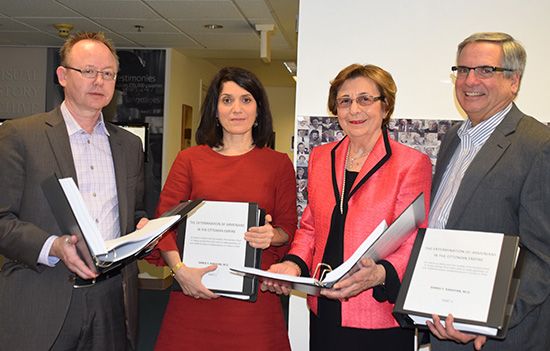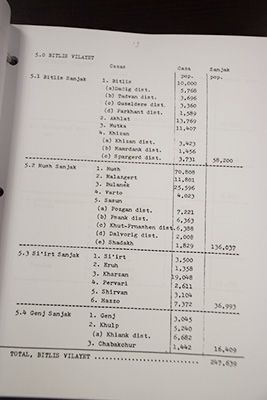Armenian Scholar Donates Four-Volume Research Book to USC Shoah Foundation

From left: Wolf Gruner (Center for Advanced Genocide Research), Carla Garapedia (Armenian Film Foundation), Silva Karayan, Jerry Papazian (Armenian Film Foundation).
When Dr. Sarkis Karayan set out to learn how many people were killed during the Armenian Genocide, he began a journey that would take him more than 20 years to complete.
That’s because to know how many were killed, he first needed to know how many Armenians were alive before the genocide started in 1915. And to do that, Sarkis had to pour through aging documents and visit libraries far and wide to find out where they lived. A medical doctor by day, in his spare time, Sarkis used his fluency in Ottoman Turkish, Modern Turkish, Eastern Armenian, Western Armenian, Classical Armenian, French and German to compile a comprehensive list of 4,600 towns and villages that were home to Armenians in pre-genocide Turkey.

He used his research to calculate that 2 million people perished during the genocide. The book is set to be published by the Armenian Film Foundation.
“This book is an invaluable resource in English, for anyone trying to understand the population numbers living in Ottoman Turkey right before the genocide started,” said Carla Garapedian of the Armenian Film Foundation. “Dr. Karayan’s study contains an index of Armenian towns and villages, based on many sources, including official Ottoman records. Each Armenian town and village has an actual location, in latitude and longitude.”
Karayan’s research includes different spellings for places that don’t even appear on maps, or no longer even exist at all. The matter is further complicated by the fact that the Turkish government renamed many of the places in 1959. The book represents the first time the names of so many places have been compiled in English, Silva Karayan said.